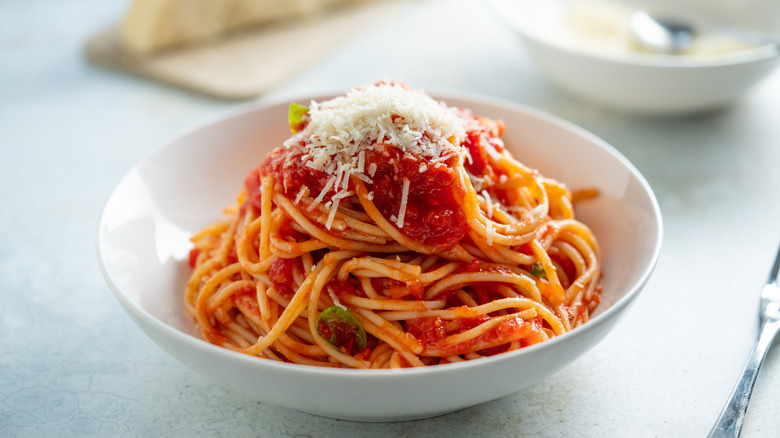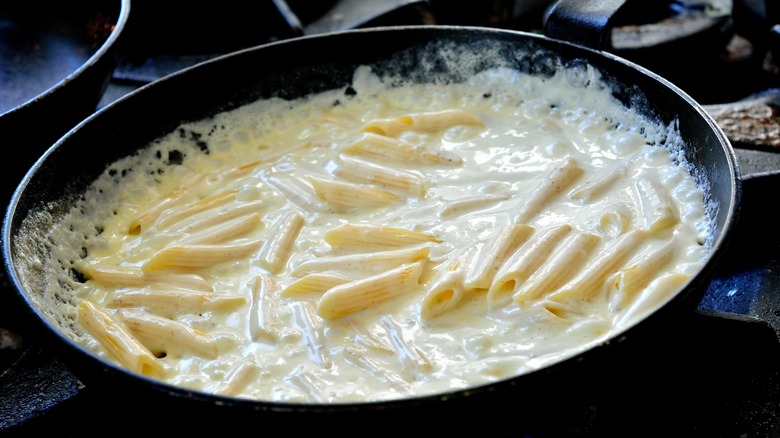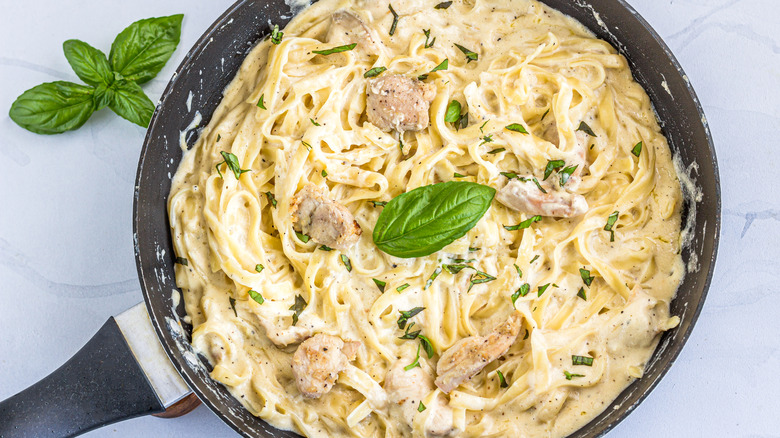The Pasta Reheating Tip We Wish We Knew Sooner
Pasta is arguably one of the greatest foods on planet Earth. However, it is also one of the easiest to overmake. Countless home cooks have found themselves neck deep in noodles, flanked by farfalle, swamped by spaghetti, and mired in macaroni. In fact, at this very moment, many of us likely have leftover pasta in the fridge that's still perfectly fine to eat. Reheating leftover pasta can take a toll on its texture, though, so you should consider the heating method you use.
Chances are, you're probably reheating your pasta wrong, so pay attention to one particular suggestion on how to make the most of your leftover pasta. Warming up last night's pasta is best done on your stovetop, in a nonstick skillet brought to medium heat. The only thing the noodles need is a splash of liquid — ideally the starchy pasta water the noodles were boiled in — which helps to loosen any noodle clumps and rehydrate them at the same time.
The skillet solution for properly reheating pasta
A nonstick skillet has sufficient surface area to ensure the uniform warming of your leftover pasta. While a pot could work, a skillet prevents any parts of the pasta from being literally left out in the cold. Furthermore, using a nonstick skillet will help the clumps of pasta sauce to come back together as your food is being fired up. This is particularly important when you're working with creamy sauces, which need heat for the clumps to coalesce into a smooth sauce.
Alternative reheating methods, like the microwave, can result in parched pasta. In a skillet, with just a few splashes of water, the pasta can disentangle itself, and the liquid will also smooth out the sauce that is coating the newly loosened noodles. If you preserve some starchy water from the original batch's boil, you can maximize the effectiveness of this simple water hack to reheat leftover pasta. You can add a bit of oil to the skillet first — although you should only sauté your pasta for a few minutes, this oil can help keep your leftovers from being burnt.
Tips for reheating pasta in your nonstick skillet
While a skillet makes for the perfect pasta reheating tool, it takes some preparation to get the best results. If you want your leftovers to maintain a nice texture, there are several storage tips you'll need to employ. Stirring a small amount of starchy pasta water into your leftover pasta before storing it — whether it has sauce or not — is a great way to keep the pasta from sticking together. But don't dump your pasta water down the drain after this step! Save some for later, when you'll add another starchy splash as you reheat your pasta in the nonstick skillet. You also need to refrigerate your pasta in an air-tight container; how long leftover pasta lasts in the fridge can vary, but it's usually around five days.
The most important tip for pasta storage and its subsequent reheating comes before you've even put your leftovers in the fridge. When you're planning your meal, you should aim to keep some of your pasta noodles free from sauce. This will prevent your pasta from soaking up any extra liquid and becoming bloated during storage. You can reheat this plain precooked pasta with just a brief, 30-second boil, and heat up the sauce separately in the microwave or a saucepan. With these storage strategies, leftover pasta will become the new star of your refrigerator.


